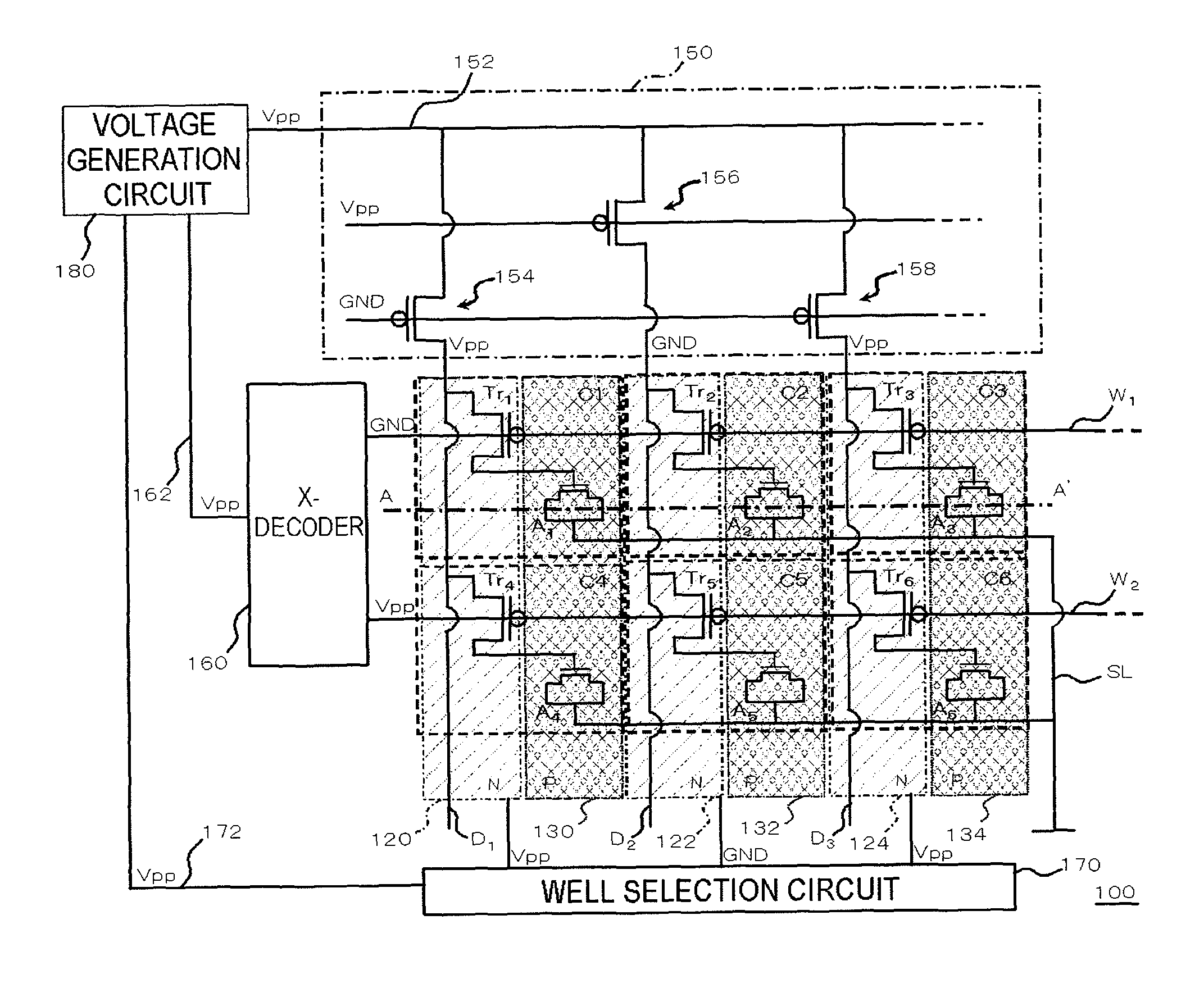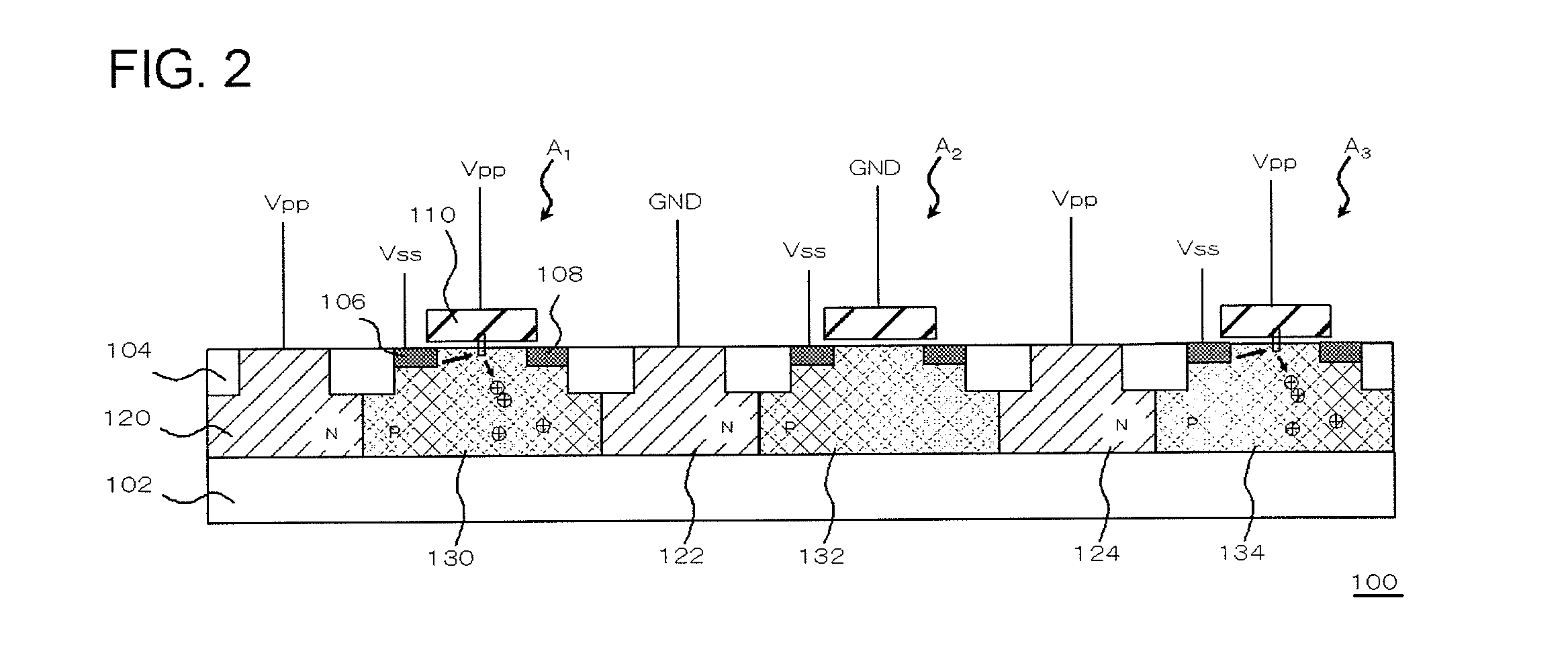Semiconductor memory device and a method of controlling a semiconductor memory device
a memory device and semiconductor technology, applied in the direction of information storage, static storage, instruments, etc., can solve the problems of long programming time, increased testing cost, and difficulty in precisely judging the program status of the anti-fuse element, so as to achieve the effect of reducing the processing tim
- Summary
- Abstract
- Description
- Claims
- Application Information
AI Technical Summary
Benefits of technology
Problems solved by technology
Method used
Image
Examples
Embodiment Construction
[0027]The invention will now be described herein with reference to an illustrative embodiment. Those skilled in the art will recognize that many alternative embodiments can be accomplished using the teachings of the present invention and that the invention is not limited to the embodiments illustrated for explanatory purposes.
[0028]Embodiment of the present invention will be explained below, referring to the attached drawings. Note that all similar constituents in all drawings will be given similar reference numerals or symbols, and explanations therefor will not always be repeated.
[0029]FIG. 1 is a circuit diagram illustrating an exemplary configuration of a semiconductor memory device of an embodiment of the present invention. FIG. 2 is a sectional view illustrating a layout which appears at a cross section taken along line A-A′ in FIG. 1. FIG. 1 and FIG. 2 illustrate a status of programming carried out by applying a predetermined level of programming voltage to the anti-fuse elem...
PUM
 Login to View More
Login to View More Abstract
Description
Claims
Application Information
 Login to View More
Login to View More - R&D
- Intellectual Property
- Life Sciences
- Materials
- Tech Scout
- Unparalleled Data Quality
- Higher Quality Content
- 60% Fewer Hallucinations
Browse by: Latest US Patents, China's latest patents, Technical Efficacy Thesaurus, Application Domain, Technology Topic, Popular Technical Reports.
© 2025 PatSnap. All rights reserved.Legal|Privacy policy|Modern Slavery Act Transparency Statement|Sitemap|About US| Contact US: help@patsnap.com



